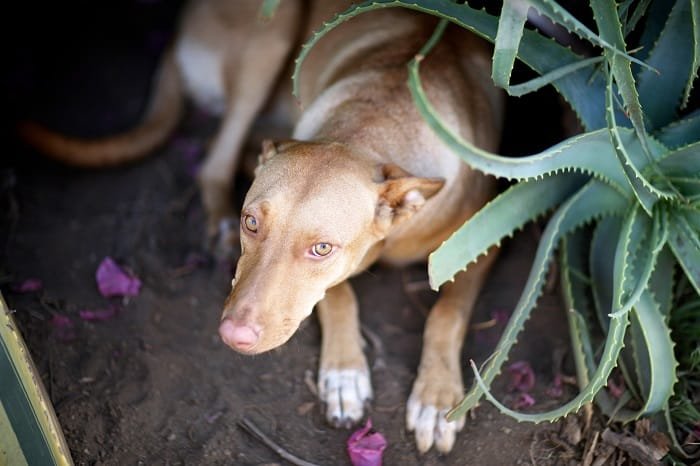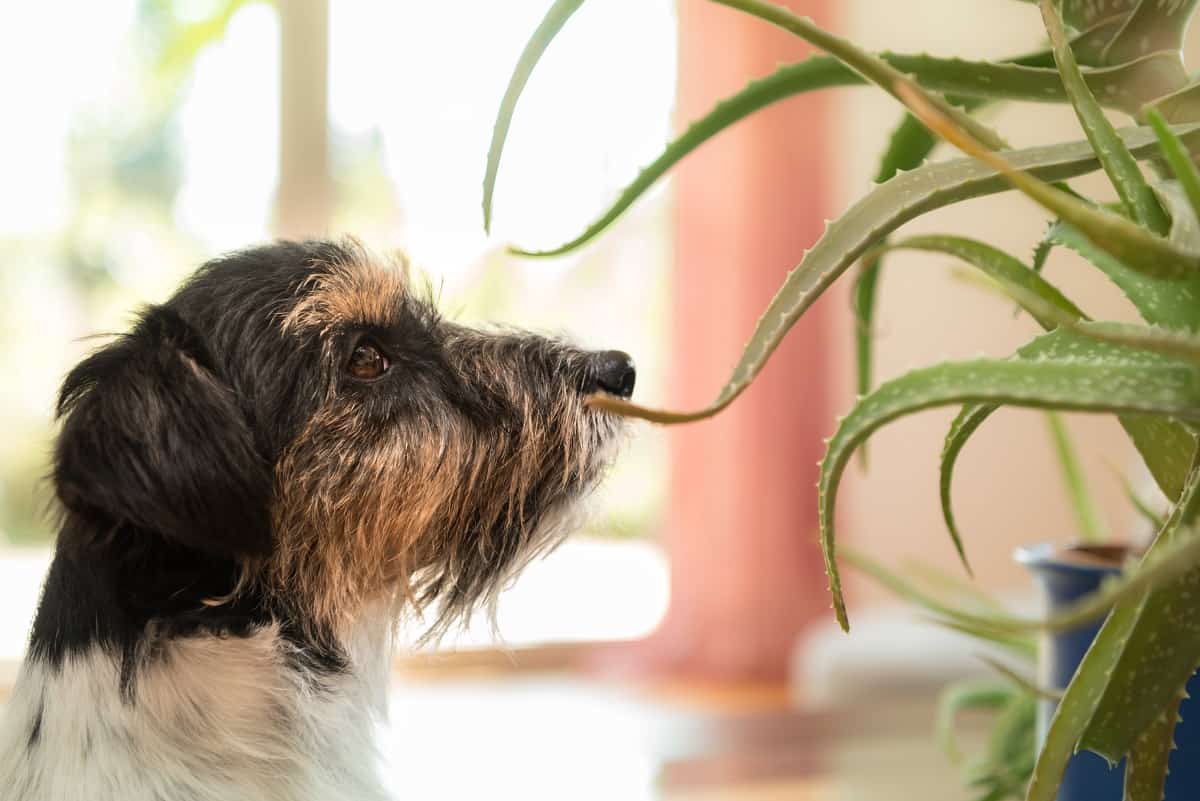Last Updated on October 11, 2024
It’s no secret that there are plenty of health benefits you can get from aloe vera. However, the same benefits might not apply to dogs. Due to that – and a lot of other misleading information – a lot of dog owners are somewhat hesitant to apply aloe vera gel on their dog’s skin thinking that it might lead to complications instead.
But really, is aloe vera gel safe for a dog’s skin? If it is, what are the benefits your furry friend can get? That’s exactly what we’re going to find out.
Table of Contents
Is It Okay to Apply Aloe Vera Gel on Your Dog’s Skin?
If you’re one of those who are hesitant to use aloe vera gel on your dog’s skin due to the various misleading information you’ve come across, then here’s some good news for you. Aloe vera is considered as one of the safest herbs you can use not just on yourself but on your pets as well.
In fact, there have been various studies done on the plant, including animal studies, all of which pointed to the effectiveness of aloe vera on a variety of illnesses.
According to research, aloe vera contains a number of essential minerals including iron, potassium, calcium, and magnesium as well as vitamins such as vitamin C, A, and E. It also contains amino acids which are the building blocks of protein.
Additionally, the plant has both anti-bacterial, anti-inflammatory, and antioxidant properties. Its gel, in particular, contains enzymes which are effective at reducing inflammation and boosting the healing process.
The only time aloe vera can’t be considered safe for your pets is when you give it to them as food. Aloe vera contains saponins which are toxic for dogs once ingested. According to Shawn Messonnier, veterinarian and author of the Natural Health Bible for Dogs and Cats, feeding pure aloe vera to your dog can cause muscle spasms, diarrhea, weight loss, and other disorders on your pet.
How Your Dogs Can Benefit from Aloe Vera
As long as you only apply aloe vera gel as a topical treatment, you shouldn’t have to worry about any complications in your dog’s health. Generally, aloe vera gel is proven to have excellent healing power, and it’s for this reason why it’s used for healing minor wounds on both humans and dogs alike.
That said, here are some of the benefits your dog can enjoy from a topical aloe vera gel application:
Sunburn Treatment
Aloe vera gel has a soothing property which makes it perfect for treating sunburns even on your dog’s skin as well as his cracked paw pads. With an aloe plant, you can take a leaf then squeeze out the juice. Afterward, apply it to your dog’s sunburned spots or cracked paws.
If you don’t have an aloe plant, you can instead go for an aloe cream and follow the instructions indicated on the label.
Itch Relief
Another benefit of aloe vera gel on dogs is itch relief. You can apply either its natural gel or a commercially prepared gel on your dog’s affected areas. Due to aloe’s effectiveness, it can relieve a number of skin problems such as lupus, eczema, mange, and hot spots. Moreover, it can also get rid of the itching caused by fleabites and minor wounds.
You may find this article interesting about Dog Skin Problems.
Wound Dressing
As mentioned earlier, aloe vera is known for healing minor wounds. It is for this reason why it works best for wound dressing among dogs. The gel of the aloe vera plant is commonly applied as a topical treatment on minor wounds and burns. You can apply it to your dog’s affected areas once or twice a day and leave it to dry.
Acne Treatment
If you notice acne on your furry friend’s skin, then applying aloe vera gel is an excellent option. The gel has the ability to soothe the skin and even kill bacteria in the process. Simply apply the gel on your dog’s acne a few times per day until they disappear.
How to Safely Use Aloe Vera Gel on Your Dog
If you have an aloe vera plant in your house, you should first take extra precautions before applying it to your dog as a topical treatment. This is because as mentioned earlier, the saponins and other compounds found in an aloe vera can cause severe complications on your dog.
First, you want to cut the leaf open to reveal a clear gel at the center. You’ll notice that the gel has a yellowish juice on its side. This is the aloe latex which you want to get rid of. Once you have extracted the gel, you can then apply it to your dog’s affected areas.

As much as possible, make sure your dog won’t ingest or even lick parts of the leaves, as it could only lead to vomiting and gastrointestinal problems.
On the other hand, if you decide to buy aloe vera products for your pets, make sure you go for ones that are labeled as pet safe. This means that these products have the aloe latex removed, allowing you to safely apply them on your pet.
Also, you might want to consult your veterinarian regarding this matter and ask for some recommendations regarding pet safe aloe vera gels.
For the best results, you want to follow these steps on applying aloe vera gel on your dog:
- Trim away the fur that’s covering the affected areas on your dog’s body.
- After that, gently clean the affected spots with a clean washcloth that was soaked in cool water.
- Next, apply aloe vera gel on the affected areas. Do the process once or twice a day until the affected areas are fully recovered.
Conclusion
As much as aloe vera gel can be beneficial to your dogs, you should never get it to them as food. Doing so will only cause them to suffer from a variety of issues. However, as long as it’s applied topically, your dog will be able to enjoy the benefits it offers.
If you have any questions regarding the application of aloe vera gel, don’t hesitate to leave a comment below. Thanks for reading!

Lacey is an environmental enthusiast and passionate advocate for living green and sustainable. She believes that everyone can make a difference, no matter how small. Lacey is dedicated to reducing her own carbon footprint and educating others on the importance of living greener. She is an advocate for green energy and sustainable practices. She is an active member of her local community, volunteering with local conservation efforts, and taking part in sustainability initiatives. Lacey is a firm believer that the only way to ensure a sustainable future is to work together and make small, but important changes.

